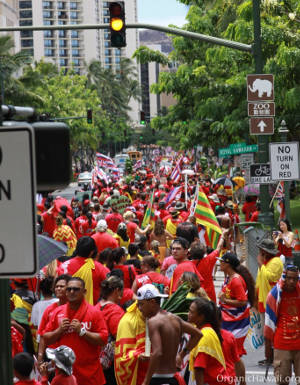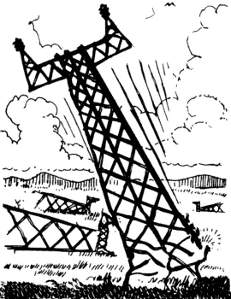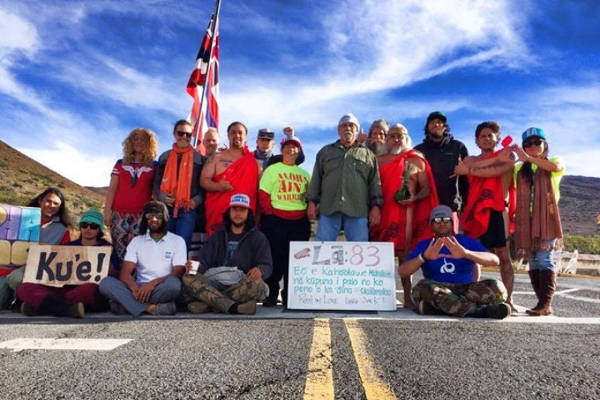The problem of pesticides
The islands of Hawai’i, especially Kauai, are frequently described as “ground zero” for GMOs. As an unwilling host to parasitic chemical agriculture, the land is bombarded with pesticides and chemicals at concentrations unseen in most other places; the test and seed crops grown by agribusiness can be dosed at much higher levels than crops meant to be eaten. The effects on the aina and its people are predictable: sterilization of the soil, massive pollution of the waters, and widespread negative impacts on human health. Though much of this harm is inherent to agriculture, even organic agriculture, the severity is drastically worse in these modern operations.
Indirect action
Legal response
Residents on Kauai, Maui, and the Big Island responded by passing laws reducing the harm the chemical companies are allowed to inflict on us, but this has two big drawbacks:
- It operates from a framework of limiting, but still permitting, the companies to poison and destroy life, rather than establishing a normative expectation of healthy landbases and sustainable operations, with all actions evaluated against that.
- It doesn’t proactively address the constitutional structure in place in the US, deliberately set up to facilitate corporate extraction of resources. Under the hierarchy of preemption, local municipalities are explicitly denied the power to enforce protections stricter than those allowed by the state and federal governments. Unsurprisingly, agribusiness immediately used the court system to strike down most of the restrictions fought for and won by the people.
Symbolic response

Photo: Pasha Yushin | OrganicHawaii.org
The response by the people in early August was the “Aloha Aina Unity March” through the streets of Honolulu to protest the diverse manifestations of civilization in the islands, including pesticides, the TMT construction project, lack of home rule, and militarization. Though it roused an impressive turnout of 10,000, this sort of symbolic protest is unlikely to be effective without organization into a credible threat to those in power. Simply asking them nicely to do the right thing won’t get us anywhere.
Direct confrontation
CELDF
A more strategic approach via the legal system is offered by the Community Environmental Legal Defense Fund (CELDF). They help localities draft bills declaring and enforcing the rights of communities and of nature against corporations. Their tactics expect and leverage legal challenges to the passage of such bills, using any pushback to highlight the undemocratic nature of our system, galvanizing and radicalizing further opposition. A CELDF representative visited multiple islands in 2013, presenting their strategy and offering assistance if a group on the ground wanted to put forward a bill or initiative. That remains as a promising possibility if anyone wants to organize towards it.
Deep Green Resistance

Another approach is that advocated by Deep Green Resistance: trace all these problems back to the root problem of civilization, especially industrial civilization. While strengthening local communities and rebuilding sustainable practices, work to end the ability of the rich to steal from the poor, and of the powerful to destroy the planet.
Given the small number of people willing to question civilization, let alone confront it, and given the desperately short timeline we face before the planet is pushed to irreversible and catastrophic collapse of its life support systems, DGR believes it necessary for some people to carry out direct attacks on critical infrastructure. By disrupting the underpinnings of systems of control, including communications, energy transportation, and electrical distribution, hypothetical underground groups would directly erode the power of those working against life, and make them more likely to concede to demands by the more “reasonable” of us in aboveground groups.
It’s uncomfortable, and even scary to contemplate life without the conveniences of civilization to which we’ve grown accustomed, but we should keep in mind:
- These conveniences come with costs usually unseen until we actively investigate: exploitation and murder of life here and abroad, human and non-human, in the present and in generations to come. Nothing civilization can give us is worth the death of the planet.
- Hawaiians lived good lives here for centuries before European contact. Depending on what you most value ― family, intimate connection to community & aina, a clean environment, and meaningful work; or short-lived labor-saving devices, fleeting visits to places far and wide, and flashy gadgets ― one could argue Hawaiians lived much better lives than we do now.
Resources
For more on the issues in Hawai’i around industrial agriculture, chemical company influence, and GMOs, see:
For more on potential big-picture solutions, see:
Get involved:
- Subscribe to this blog by entering your email at the top right of this page.
- Share this article and other DGR pieces you find interesting with family and friends.
- Fill out our Volunteer for DGR form or our Join DGR form.
- If you have questions specific to DGR Hawai’i, email hawaii@deepgreenresistance.org



